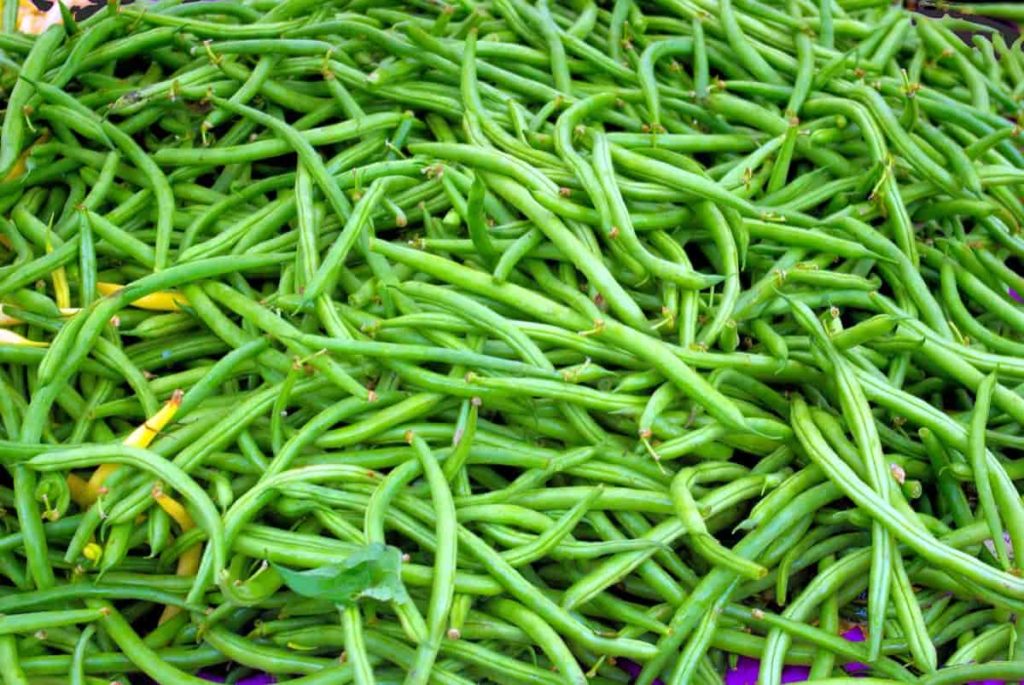
- Choose the right location: Green beans are grown year-round in frost-free areas, where temperatures range between 15-28°C. It is essential to choose a location with well-drained soils, preferably with a pH of 5.5 to 6.5 (CaC12).
- Soil preparation: Analyze the soil before planting, so that corrective measures may be taken before a problem becomes noticeable. Deep, well-drained soils are preferred, and the soil should be tilled and cleared of debris before planting.
- Fertilization: As a general guide, apply 800 – 1000kg/ha Compound A, B, C on lighter soils and 400 – 500kgs/ha on heavier soils. The amount of top dressing used, and frequency of application varies depending on soil type. On sandy soils up to 300kgs/ha. AN can be applied split on a weekly basis starting from week 3 or 4 and should continue well into flowering and pickling. Less AN would be required on heavier soils and the time between applications may be longer. Additional potash may be required and 75 – 100kgs per ha. MOP or SOP in total should be applied split between flower bud stage and early production.
- Variety selection: Choose rust-resistant varieties like Moonstone, Lomami, and Salima, supplied by Seed Co. Seed may either be mechanically or hand-sown to achieve a population of 300,000 plants per hectare.
- Planting: Sow seed to a depth of 25mm into moist pre-irrigated soil. Always plant upwind when a series of planting are to be in the same field so that the older plantings are downwind of emerging crop. This will reduce pest and disease pressure especially thrips, Heliothis, and rust.
- Irrigation: Pre-irrigate to field capacity before planting. As the seedlings are emerging, a light irrigation will help them to push through. Once all plants are through the ground approximately two weeks after planting, withhold irrigation to enable the plants to root well and reduce the chances of damping off. After this initial dry period, do not allow the soil to dry out, as this will cause stress to the plants and stimulate premature flowering. Overwatering will encourage disease development.
- Pest and Disease Management: Green beans are sensitive to several micronutrient deficiencies particularly on anthill areas in the lands. Application of foliar sprays containing zinc and iron as well as other elements will be of some benefit to the crop. Pests and diseases to watch out for include thrips, Heliothis, and rust. Regular monitoring and appropriate treatment measures should be taken to manage these pests and diseases effectively.
In Africa, green bean production is rapidly expanding, with countries such as Kenya, Uganda, and Tanzania becoming major exporters of French beans to international markets. For instance, in Kenya, green beans are grown in large quantities in areas such as Kiambu, Muranga, and Machakos counties. Rust-resistant varieties such as Helda and Sprite are commonly grown in Kenya, while in Uganda, the most commonly grown varieties include Paulista and Rocquencourt.


















